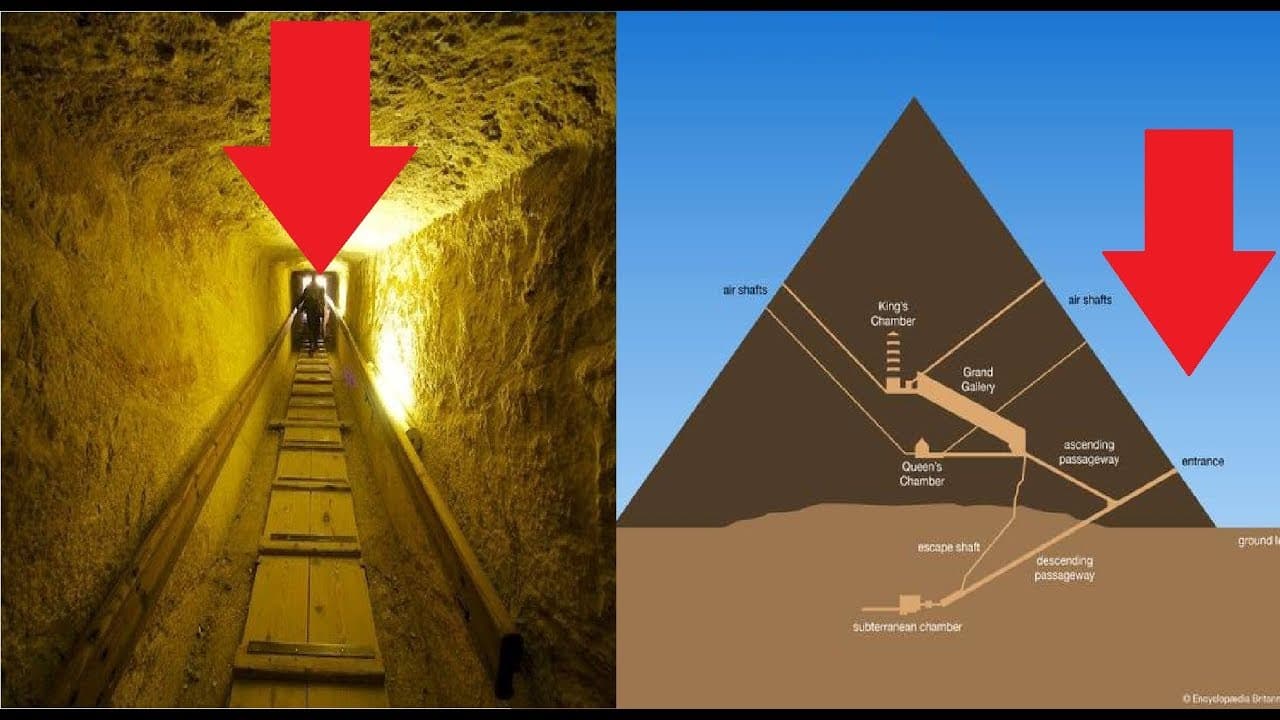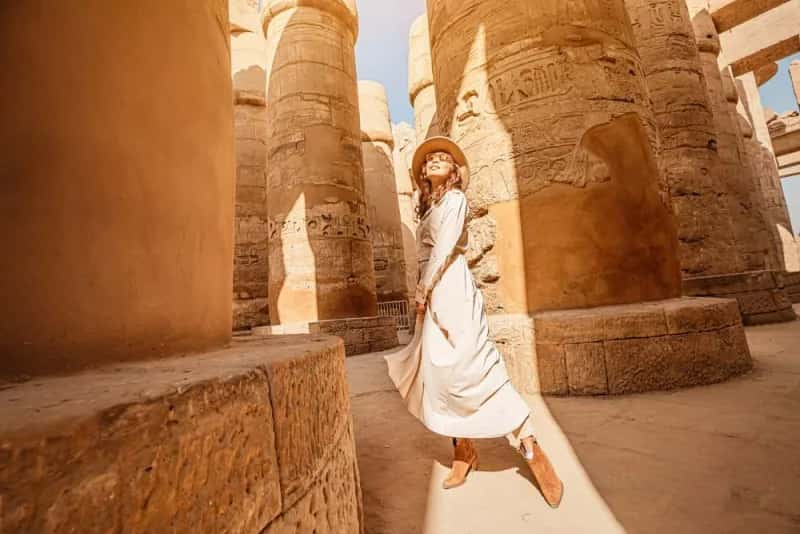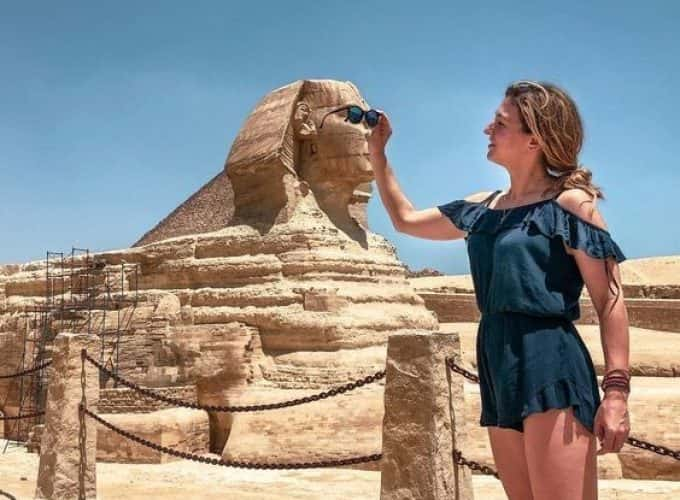
The pyramids of Egypt have captivated Humanity for over 4,500 years with their enigmatic construction. Despite being the most extensively studied monuments in history, these structures still hold significant secrets. "What lies concealed within? How were they constructed?" There are numerous conjectures, but the truth remains elusive.
Situated approximately twenty kilometers from Cairo (Egypt), Giza is a town that forms part of its metropolitan area. Its renown stems from the plateau on its outskirts, where an ancient necropolis was established around 4,600 years ago. This burial site comprises three magnificent pyramids (Cheops, Khafre, and Menkaur)
The pyramids impress and fascinate in equal measure by their mere appearance. But also because they are still wrapped in a certain halo of mystery, perhaps keeping some enigmas for future generations to solve. It is something that also gives rise to a multitude of nonsense that persists over time, such as the bizarre attributions about its authorship or the outdated and puerile theories regarding its use, one of which was recently reminded of a candidate for the presidency of USA (Ben Carson, who said they were King David's barns).
Despite certain gaps, science continues to be determined to submit them to analysis and inspection under the guidelines of the most advanced current archaeology.
The Great Pyramid, the largest and oldest of the trio, ordered to be built by Pharaoh Cheops (Khufu in Egyptian) to serve as his tomb using 2,300,000 stone blocks that make it 139 meters high, has recently been subjected to a thorough analysis using infrared thermography to verify the differences in temperature that exist in the stones and thus deduce the possibility of some vacuum behind them
And the result was that the interior of that mass is not solid, although almost. There are several chambers, three of them main (those of the King, the Queen and some tunels), several passageways, ventilation channels and the Great Gallery, 47 meters long and 8 meters high. Getting around in there is not easy and some of these sites are not accessible, even less with audiovisual systems, hence the usefulness of temperature-based prospecting systems.
Comparing the analysis of the outer surface, hot from continuously receiving the sun's rays, with the inner one, it is possible to detect much colder areas that could be due to air currents. And if the air circulates, it is because there is a channel for it, indicating its more or less approximate location to the archaeologists so that they can try to open a passage to that area. Something that the Egyptian authorities are working on in collaboration with experts from National Geographic.
It is a controversial issue and not everyone agrees on one thing. In fact, other techniques are used to find more ruins that swell Egypt's heritage: infrared analysis carried out by satellites has helped locate pyramids that were buried and robots, increasingly sophisticated and versatile, can penetrate with cameras even corners that sometimes we find them impossible (one reached the Queen's Chamber in 2002). Therefore, surely the Great Pyramid still has a lot to say.
Nowadays the excavations prove that There are some chambers and rooms, both above and below ground level, generally connected by narrow corridors, which are geometrically oriented. The rooms correspond to the resting places of the pharaohs, their families and closest servants, as well as chambers with their most precious objects in the belief that they keep them there for the journey to the afterlife.
The entrances to the corridors that usually led to the rooms were almost always sealed, others were arranged vertically to facilitate the entry of light during construction works. There are corridors that end in empty rooms or are distributed in a labyrinthine fashion in order to make the job of tomb raiders a little more difficult.
Last November, the people in charge of Scanning Pyramids announced that they had discovered thermal anomalies in the Great Pyramid of Giza: zones with a very localized temperature difference of between 3 and 6 degrees.
The heat of wood is different from that of stone, so it is possible to venture the possible existence of secret chambers.
The objective of the project, of course, is to unveil once and for all the mysteries hidden in the largest of all the pyramids.
archaeologists think that The tomb of the most famous Egyptian queen might be hidden in a secret room attached to the tomb of Tutankhamun " in luxor not in pyramids. Even if we find an empty square meter somewhere, new questions and hypotheses will appear that may help answer the ultimate questions.
The necropolis of the Valley of the Kings will also be one of the main objectives for the Scientists , and it will be scanned with the same technology. Archaeologists hope to find new secret chambers and, if possible, the one that hides the body of Queen Nefertiti, whose burial remains unknown.
The archaeologist Nicholas Reeves explained in a recent study that the tomb of the most famous Egyptian queen could be hidden in a secret room attached to the tomb of Tutankhamen. The Egyptian minister himself supports Reeves's theory, since the scratches and marks present on the north and west walls of the chamber are strikingly similar to those found by Howard Carter at the entrance to the tomb.
the archaeologists plan to scan the entire Dahshur and Giza area for a 3D reconstruction of their monuments, pyramids and temples, as well as the sphinx. What secrets does Ancient
some travelers asking a lot if is it possible to go inside the pyramids. and the answer is yes. The interiors of all three pyramids of Giza are open to visitors, but each requires the purchase of a separate ticket.
No. Visitors are no longer permitted to climb the pyramids. Although tourists were once able to freely climb the pyramids, that is now illegal.
Egypt still hide? We'll find out soon: archaeologists are convinced that this year will be the year of the Pyramids.
Read Also:
Cairo Egyptian Museum Of Egyptian Antiquities
“In my opinion, I believe a good writer makes content easy to read, and entertains the reader, making comprehension effortless.
By Kate Clark.webp.webp&w=3840&q=60)
Discover Egypt with this exclusive five-day Cairo and Luxor tour. Experience the Egyptian history by visiting pyramids a ...
$ 699 | Per Person

Book this Egypt Budget Tour and enjoy 8 days Cairo and Nile cruise tour package at the best price with 5 star quality ac ...
$ 999 | Per Person
-1.webp.webp&w=3840&q=60)
This Egypt Itinerary 8 Days Cairo and Nile cruise package is the best Egypt tour travelers book. Visit the best of Egypt ...
$ 1299 | Per Person
.webp.webp&w=3840&q=60)
The best Egypt Vacation Package: 11 day Egypt Trip Package. Starting by ancient Cairo, Cruising the Nile then relax on t ...
$ 2199 | Per Person

if you want to spend New Years in Egypt This 8-day Cairo and Nile cruise package is one of the best Egypt new year offer ...
$ 1799 | Per Person

This is the best offer among all Egypt Honeymoon Packages, Cairo, Nile Cruise and Hurghada 11 day romantic trip. Book To ...
$ 2199 | Per Person